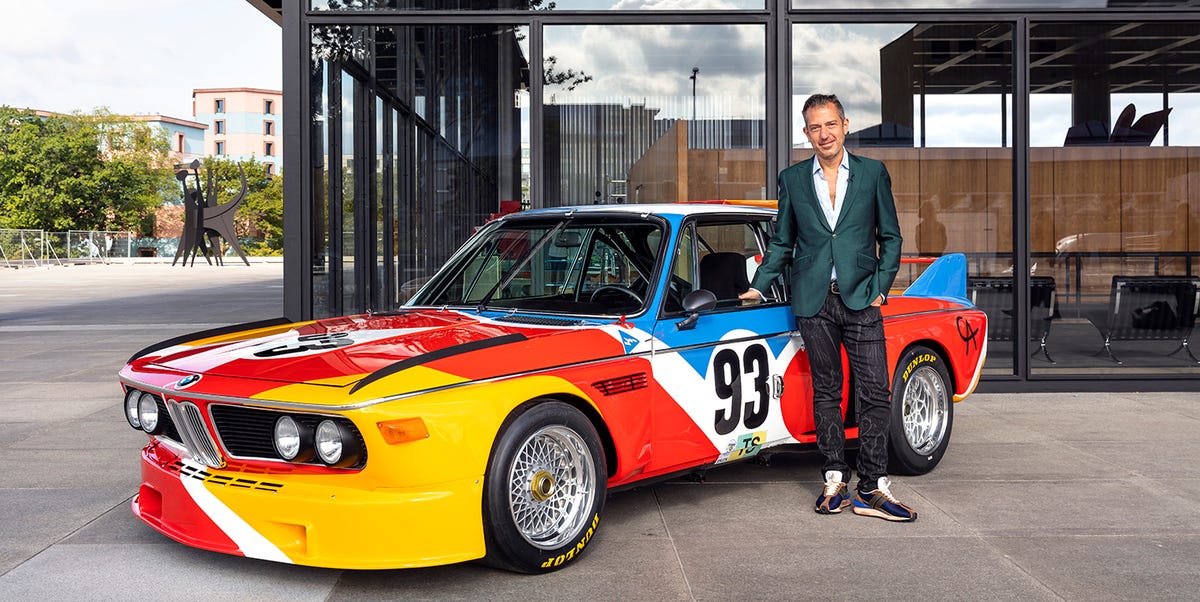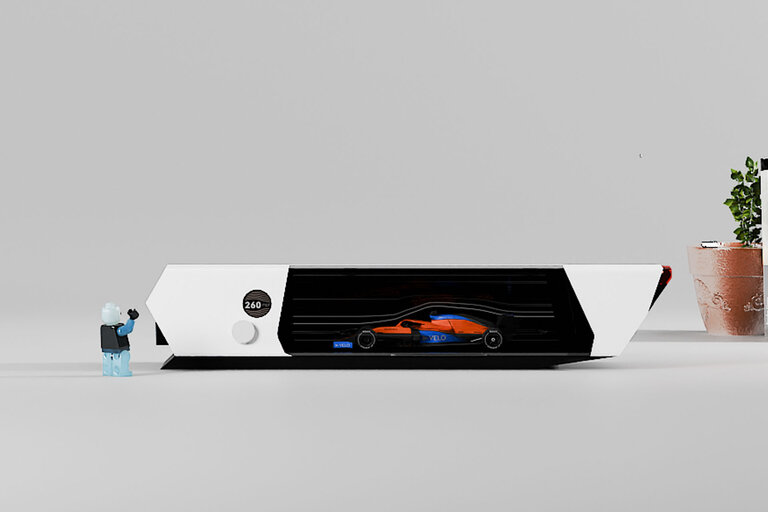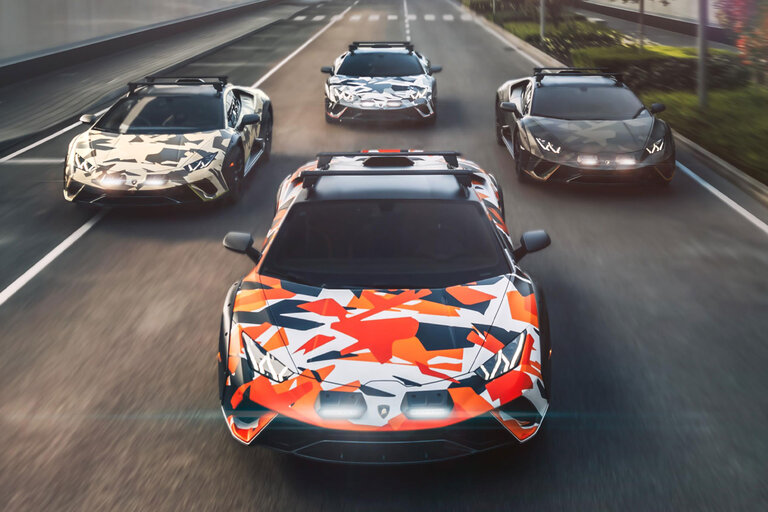
David von Becker/Calder Foundation
“I want to hear the engine,” 13-year-old Alexander S.C. Rower said to his grandfather. “Let’s start it.”
This was back in 1976. The setting was the Whitney Museum of American Art in New York City. And the car—a 1975 BMW 3.0 CSL—wasn’t going to start. It was on display for the first time in the United States as part of a retrospective, Calder’s Universe, celebrating Rower’s grandfather, artist Alexander Calder.
Known as “Calder’s Car,” BMW’s first Art Car was painted in Calder’s red, yellow, and blue palette (applied by Walter Maurer, who would go on to paint cars by Andy Warhol, Roy Lichtenstein, and Jeff Koons). Before it became a museum piece, the Calder car ran hard, competing at the 24 Hours of Le Mans the year before, driven there by Sam Posey, Jean Guichet, and Hervé Poulain. The car dropped out of the race after seven hours thanks to a defective prop shaft, but it was Poulain who would commission the car’s artistic turn at Calder’s French studio and on behalf of BMW.
“There I am with my grandfather, standing next to this car, and it’s like totally awesome,” says Rower, who goes by Sandy. “The fact that there’s no like vinyl interior inside the doors. It’s all skeletal inside. It’s supercool. Like, whatever is needed, but not anything extra.”
Technically, the car belonged to BMW’s collection, but that long ago day Calder assured his grandson that he intended to make an exact copy of the car the kid could one day drive. Then, two weeks later his grandfather died. “More than any other American artist, Calder penetrated the awareness of the public at large,” the New York Times wrote in his obituary. Georgia O’Keeffe, Norman Mailer, and John Cage helped celebrate the opening of the Whitney’s exhibit.
Much of his work was about motion, embodied by his mobiles. He also wanted to push his work out to the masses. In 1973, Braniff International Airways commissioned him to paint a plane. “Flying Colors of South America,” as it was known, was showcased at the Paris Air Show in 1975. “It got a huge amount of attention,” Rower says. “I mean, this was before airplanes were painted. It didn’t say Braniff anywhere on it and had Calder’s name over the door.” The buzz attracted BMW’s attention. The Art Car was born shortly thereafter.
Rower eventually became the steward of his grandfather’s legacy. In 1987, he founded the Calder Foundation and has organized countless exhibitions of his grandfather’s work while organizing the archives for curatorial scholarship. But he never forgot about that day at the Whitney. As the years passed, the foundation received plenty of requests for the car. “I started to think it would be kind of amazing if we had Calder’s car and we could lend it to exhibitions and activate it, have the engine have the fierce roar, because the one in Munich doesn’t have an operable engine,” Rower says. “They’re never going to drop in an M49 engine in a car and let somebody tear it around the track.”
Rower doesn’t define himself as a car enthusiast, but he has a penchant for delightful classics. (“This is my definition: I don’t own a spark-plug wrench,” he says. “Thus, I’m not a car guy.”) He owns a green 1958 Jaguar XK, a Citroen DS station wagon, and a Deux Chevaux. He says he’s in the market for a 1930 LaSalle, like the car his grandparents drove around the Calder studio in Connecticut.
He set about tracking down an identical 3.0 CSL. “I made all these rookie mistakes looking for the wrong thing.” It took a couple years until his car collector friend Bob Rubin helped him find one in Sweden, and in 2018 he bought the car.
Rower reached out to BMW and connected with Thomas Girst, global head of cultural engagement, who oversees the BMW’s Art Car program. Rower approached him about making a precise copy. BMW was all in.
Restorer Franz Ostermaier worked at the BMW Classic Center in Munich, comparing the Calder art car to the copy. The replica was equipped with an identical six-cylinder engine used for racing. Rower contacted Maurer, now almost 80, to apply the coat of paint to the artist’s proof. Maurer mixed over a dozen yellows until he landed on an exact match of his original work.
After numerous COVID-related shutdowns and supply delays, the car was finished early last summer and is so good it’s hard to tell the cars apart. “There’s a fire sensor on the roll bar that really blew me away that’s from 1975, from the aeronautic industry,” Rower says. There are a few differences. BMW made and applied reproductions of the race stickers. Those have been removed. “Our car didn’t race so it shouldn’t have those on,” Rower says. “It’s not a clone.” Girst was able to sort out a new VIN made official by BMW for authentication purposes.
The replica is now on view at the Norton Museum of Art in West Palm Beach, Florida, through April. Next up it will likely be shown at Calder Philadelphia, a new exhibition space in Calder’s hometown. And while you won’t be able to fire up the engine, Rower has. “My 13-year-old self was super excited to hear that engine,” he says. “And it just was like, you know, beating in your chest, and I just had a huge grin on my face.”
This content is created and maintained by a third party, and imported onto this page to help users provide their email addresses. You may be able to find more information about this and similar content at piano.io
#BMW #CSL #Grandpa #Famous
Source link







